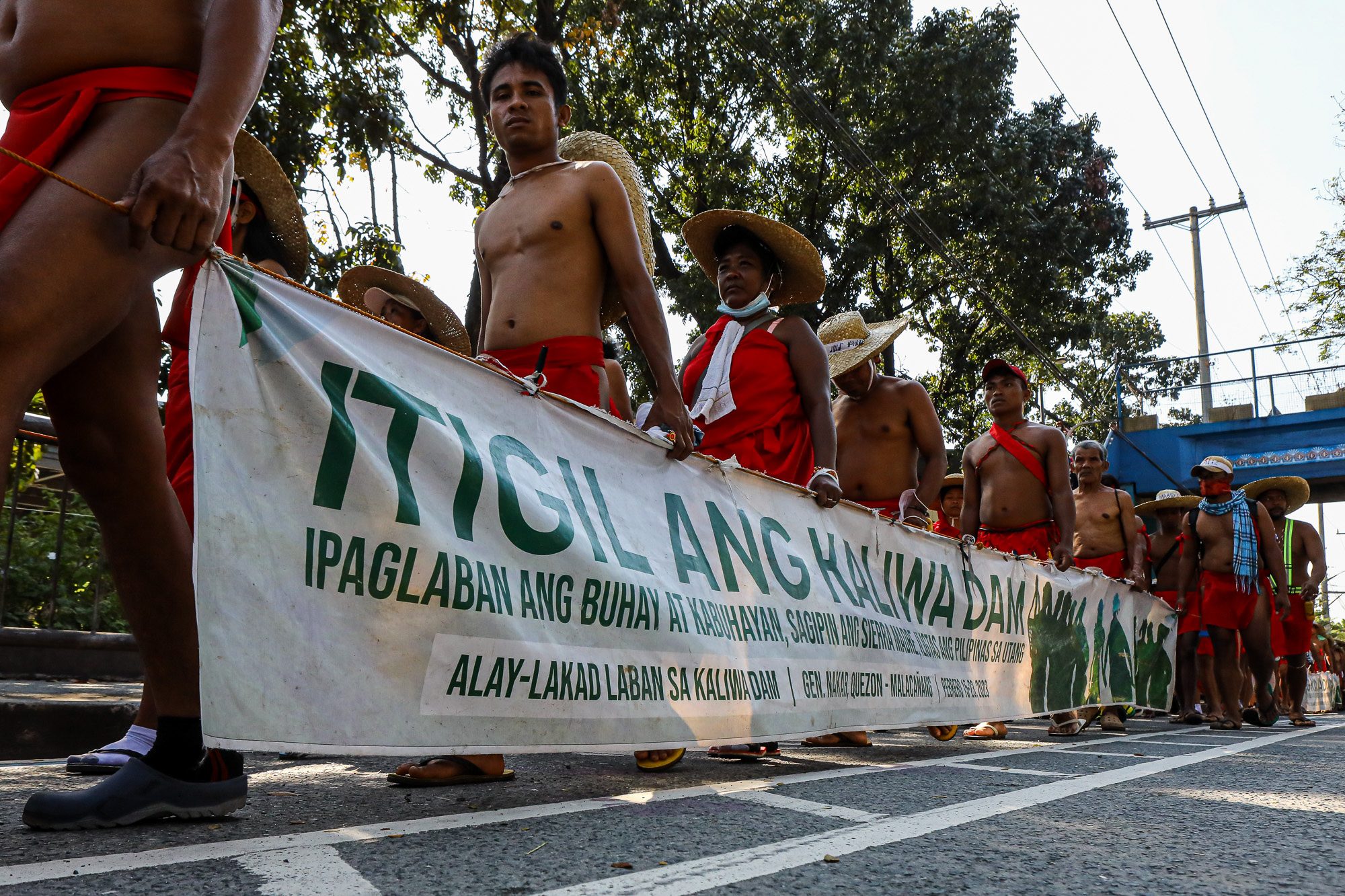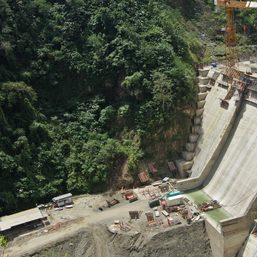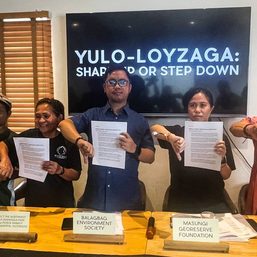SUMMARY
This is AI generated summarization, which may have errors. For context, always refer to the full article.

MANILA, Philippines – For more than a week, Lucy Astoveza has been walking around 20 kilometers a day. She joined 300 Dumagat-Remontado indigenous people in their march from General Nakar, Quezon to Malacañang in Manila.
It’s been a grueling march. Traversing several municipalities and cities across the provinces of Quezon and Rizal and the national capital covers over 150 kilometers. On some parts of their route, the protesters have to walk uphill and even on muddy tracks.
“Halos namimintig ang aking mga binti [ko],” Astoveza told Rappler. “Kung minsan, gabi pa, umaalis na. Tapos nakakaranas po kami ng malakas na pag-ulan.”
(My legs are in pain. Sometimes, we continue our walk even when it’s still dark. We also had to push through even when it’s raining.)

She wore slippers throughout the march, sometimes even walking barefoot when it rained. But her motivation exceeds the pain and blisters on her feet. Her family and community’s future depends on the success of their protest.
Arrival in Metro Manila
More than just a physical feat, their march has been an emotional journey.
On Wednesday, February 22, their contingent finally arrived in Metro Manila. In front of Ateneo de Manila University in Quezon City, Astoveza gave an impassioned plea in front of farmers, fisherfolk, media, church workers, and other citizens.
“Tuwing naglalakad po kami, kung maiisip ko ang gagawin sa amin at mangyayari sa amin…halos ako po ay umiiyak sa daan dahil pakiramdam ko pasan ko ang Sierra Madre,” she said.
(When we’re walking, whenever I would think about what they’re going to do to us and what’s going to happen to us, I would almost cry on the road because I feel like I carry the burden of Sierra Madre.)
A number of civil society organizations, including environmentalists, oppose the construction of Kaliwa Dam, a China-funded mega-dam project being implemented by the Metropolitan Waterworks and Sewerage System (MWSS).
The dam is supposed to address the perennial water shortage in parts of greater Metro Manila, which is currently heavily dependent on a single source – Angat Dam in Bulacan province.
However, its construction will displace some indigenous communities in Quezon and Rizal, and would impact areas in the Sierra Madre mountain range, also called Philippines’ last great rainforest and Luzon’s buffer against strong typhoons.
Astoveza dedicates her crusade to her ancestral land and the Sierra Madre, but most especially to her children and grandchildren.

“Wala po saking nagpilit na sumama rito dahil kusang loob po ang aking pagpunta at alang-alang sa aking mga susunod na henerasyon, sa aking mga apo, at sa Sierra Madre,” she said.
(No one forced me to join this march. I am doing this for the next generation, for my grandchildren, for the Sierra Madre.)
Tuwing naglalakad po kami, kung maiisip ko ang gagawin sa amin at mangyayari sa amin…halos ako po ay umiiyak sa daan dahil pakiramdam ko pasan ko ang Sierra Madre.
Lucy astoveza
Duplicating the success against Laiban Dam
Despite occasionally heavy rain and the long walk, the representatives of the Dumagat-Remontados are hopeful that their march will duplicate what they believe is their successful protest march against the Laiban Dam project in 2009.
According to a report by the Philippine Center for Investigative Journalism, the P52-billion Laiban Dam was supposed to supply 1.9 billion liters of water to Metro Manila, but it would have submerged seven barangays in Tanay, Rizal, and one barangay in General Nakar, Quezon.
In 2010, the government canceled its deal with San Miguel Corporation. Many residents hailed this as a victory. Yet more than a decade later, a number of those affected are again defending their homes and the environment.
“Nanahimik po ang gobyerno sa matagal-tagal ding panahon,” said Dumagat leader Conchita Calzado on Wednesday, February 22, recalling the aftermath of the Laiban Dam project halt.
“Hindi namin alam na umuusad pala ang kapalit na Kaliwa Dam. Kaya muli, kami po ay nag-aalay muli ng aming mga sarili at naniniwala kami na ang nangyari sa Laiban Dam ay puwede ring mangyari sa Kaliwa Dam– na walang pinag-iba,” she said.
(The government was silent for a while, but we didn’t know Kaliwa Dam was already being planned. We are again offering ourselves, believing that what happened with Laiban Dam can also happen with Kaliwa Dam.)
Calzado was one of those who joined the march against Laiban Dam back in 2009.
‘Best solution’
The MWSS maintains that Kaliwa Dam is the best solution to Metro Manila’s water shortage, after the Laiban Dam project was set aside years ago.
In an interview on the ABS-CBN News Channel on Thursday, February 23, Kaliwa Dam project manager Ryan James Ayson said, “Now, we have redesigned the location of the dam to minimize environmental and social impacts….This is the best solution we have right now.”

Ayson admitted that the construction of the dam will cause flooding, “but this flooding that will be caused by the dam will be controlled and checked.”
“Unlike when there’s no dam, the water’s just freely flowing downstream,” he said.
Acknowledging the social and environmental costs of the project, the MWSS paid a P160-million disturbance fee to two indigenous people groups. Ayson said they will help these groups as they spend P80 million for “community development programs.”
However, the indigenous people who marched from Quezon province to Metro Manila called the P160-million disturbance fee a “bribe.”
“Hindi po kami tumanggap at hindi po kami kabahagi doon sa kanilang sinasabing P80-million,” Astoveza said. “At hindi naman po kami naghahangad ng P80-million dahil ang amin pong hinahangad ay lupaing ninuno.”
(We didn’t receive anything. We don’t want P80 million, what we want is protection of our ancestral land.)
On the last day of their march, the indigenous people will walk to the MWSS office in Balara, Quezon City, located less than three kilometers from Ateneo where they spent the night.
After their stop at MWSS, they will head to the main offices of the National Commission on Indigenous Peoples and the Department of Environment and Natural Resources before their last stop in Malacañang. – Rappler.com
Add a comment
How does this make you feel?
![[OPINION] Why should the construction of Kaliwa Dam be stopped?](https://www.rappler.com/tachyon/2021/01/Kaliwa-Dam-ispeak.jpg?fit=449%2C449)







![[OPINION] Kaliwa Dam and climate justice](https://www.rappler.com/tachyon/2023/11/Screenshot-2023-11-26-at-2.22.50-PM.png?resize=257%2C257&crop=271px%2C0px%2C716px%2C716px)









There are no comments yet. Add your comment to start the conversation.